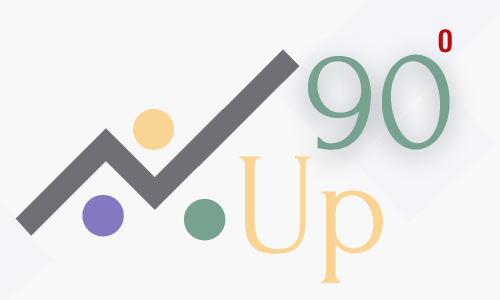Why 90 Degrees Up?
Are You Wondering ...
Why Would I Partner with 90 Degrees Up?
Hello. I’m Sarah Smongeski, non-profit enthusiast, flutist, and gardener. I ran a respected community school for the arts located in Central Massachusetts for over 30 years.
During my tenure, with the support of the School’s board, staff, donors and faculty, I grew the school from 40 students to over 400. Similarly, I also grew the budget from $40,000 annually (yes, we were small!) to $500,000 (still relatively small in the larger scheme of things).
Upon retirement in 2023, I left the school with sufficient cash reserves to operate for several years in the event of an emergency that might disrupt operations.* That was possible, in part, by keeping my feet grounded. I budgeted carefully and realistically allowing the School to gradually accumulate small reserves over a 25 year span. We were also fortunate to craft partnerships with individual donors and grantors whose generosity further strengthened the school’s mission and balance sheet.
During my tenure, I ran three campaigns. The first was focused on building the School’s capacity for the future, a “capacity campaign”. The second, which followed shortly thereafter, was needed to move the school from suburbs to city, a “capital investment campaign”. The third celebrated the School’s 40th anniversary: a capital campaign to purchase a Steinway Grand piano and build associated cash reserves for the future.
Most of what I know I learned on the job.
What I can offer you is realistic advice and approaches that work in the real world. Consultants often come into an organization (yes, I worked with a few) with big ideas to help you change and grow. Sometimes they want to leave their own mark of accomplishment. But what I discovered over a span of time is that many don’t really understand small organizations and the unique challenges they face.
The best consultants, also board members, whom I worked with were those who understood that quick and easy solutions are usually not ‘solutions’. They understood that everything is interconnected, and the best approach is not always the one most commonly sanctioned in the ‘how to’ books and via online advice. Instead, we chose what worked for our organization and the people we served, keeping in mind best practices.
I pledge to a similar approach if I work with you. For organizations, I look at the big picture, consider a reality check per your staffing and board membership, and then figure out what is possible with the resources available. No fireworks, no big egos. Let’s figure it out and get it done.
90 Degrees Up is about finding or creating a strong footing and moving up from there.
*In 2023, about forty percent of non-profits reported having insufficient emergency funds (1). The non-profit sector generally recommends an organization have 3 to 6 months of reserves on hand to guard against an emergency that might interrupt revenues and cash flow.
Why The Name?
The Magic of the Right Angle

I visited the colosseum in Rome in August, 2023. I love how ancient buildings can inspire us to think about the past, while challenging us to think about why some things last and some don’t.
Throughout history the right angle has dominated architecture and design. Right angles ensure stable structures and create ease and efficiency when cutting and joining.
Although most early temporary structures – think tepees and yurts – were circular*, the construction of permanent buildings throughout most of recorded history has been dominated by the right angle.
And while modern architecture leans toward more complex designs using diagonal relationships and curves, the right angle remains the cornerstone of the way we live, around which activity is oriented.
At 90 Degrees Up, I’d like to work with you to discover, uncover or create the cornerstone ideas and actions you need to build a successful business. Start-ups and small non-profits are my area of expertise.
My own approach as a former 30-year Executive Director was always to think long-term. We live in a world where quick decisions, short-term measurables, overwhelming information, and fast profits dominate. I believe there is a better approach, that ensures greater stability while also positioning one to build capacity over time.
When I work with you, I’m interested to learn about your mission and goals. Then, what do we need to do to filter through the noise, to ensure efficient use of time and to make anchored decisions for the future.
*Coming Soon...
More about Tepees, Yurts and other ways of living. Do we still need the foundation of a right angle?
How Has the Colosseum Survived?
“A team of interdisciplinary researchers recently discovered a potential answer to why these ancient Roman buildings have been able to weather the test of time while many modern, concrete structures seem to crumble after a few decades.
The answer: “self-healing concrete.” More at NPR here.
“The substructure of the colosseum is one of the main reasons why it’s still standing. Due to the poor condition of soils, a deep and strong foundation was required to stabilize the structure.” Visit Ancient Structures in Rome for more information.
